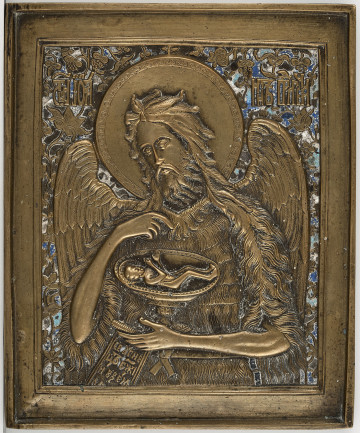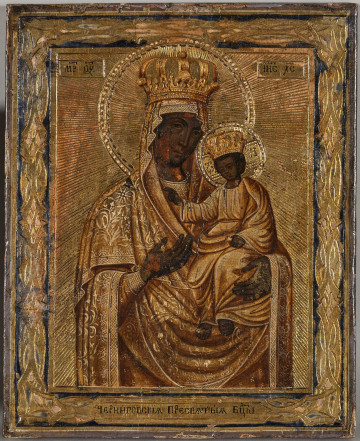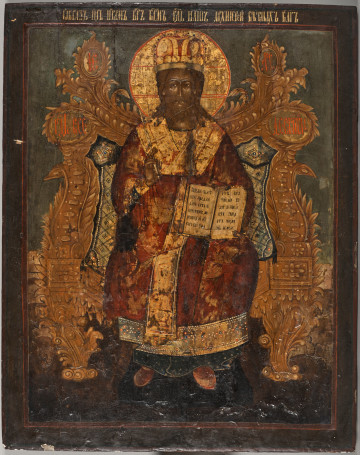
St. John the Baptist
20th century
Castle Museum in Łańcut
Part of the collection: Icons
The Trinity Belief in the one tri-personal God of Father, Son and Holy Spirit attests to belonging to Christianity and is its foundation. Early Christian theologians, who recognised it as revealed truth and sought its confirmation in the Bible, explored and pondered the mystery in their writings. The dogma of the Holy Trinity concerning the co-existence of the three divine Persons, approved at the universal Council of Constantinople in 381, is fundamental. In the fourth century, based on the theological interpretation of the Church fathers, the first attempts to depict the invisible God in the Trinity on the basis of the Old Testament appeared. The book of Genesis describes Abraham's hospitality in welcoming three messengers of God in the grove of Mamre (Ex 18:1-16), which is interpreted as the Holy Trinity, a foreshadowing of the incarnation of Christ. In the monasteries of the holy Mount Athos, these messengers were depicted as angels. The connection of Christian Rus with the Athos monasteries goes back to the time of Antoni Pechersky (+1073), the founder of the Lavra near Kiyv. These links were strengthened in the 14th/15th century by the Ruthenian Metropolitan Cyprian (1406). He introduced a liturgical reform along the lines of the Greek tradition, emphasising the special significance of the Holy Spirit and the participation of the Holy Trinity in the mystery of the transfiguration of the gifts. It significantly impacted the further development of imagery of the Holy Trinity, inseparable from the mystery of the Eucharist, exemplified by Andrew Rublev's icon 'The Holy Trinity'. Such imaging with simultaneous preservation of the proper relationship between the Annals was considered correct, canonical. Popularly, this way of imaging is called the Old Testament Trinity, as in the presented icon. Images of the Holy Trinity, showing the Father and the Son in human forms, and the Holy Spirit as the dove have become popular only since the eighteenth century Teresa Bagińska-Żurawska https://orcid.org/0000-0002-9243-3967
Other names
Old Testament Trinity
Dimensions
height: 32 cm, width: 27.2 cm
Object type
Icons
Technique
gilding, tempera
Material
gold, tempera, canvas, wood
Origin / acquisition method
decyzja administracyjna
Creation time / dating
Creation / finding place
Owner
Castle Museum in Łańcut
Identification number
Location / status

20th century
Castle Museum in Łańcut

19th (?) century
Castle Museum in Łańcut

1800 — 1850
Castle Museum in Łańcut
DISCOVER this TOPIC
Museum of King Jan III's Palace at Wilanów
DISCOVER this PATH
Educational path